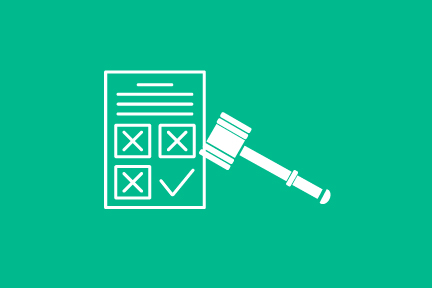Easements 101

In real estate law, any interest in land is known as an “estate.” The property over which the easement is being granted is called the “servient estate,” because the rights of the property owner are encumbered or restricted by the easement, which cannot legally be interfered with. The property the easement grants access to is called the “dominant estate.”
Easements can be created by a deed or other instrument that conveys property, or they can be created by a contract or will. These are called express easements. Other easements are implied by a court as a result of the specific circumstances. There are several different kinds of easements that fall under these categories.
Common Easement Types, Phrases, and Terms
“Express easements” are documented in writing in the ownership instrument for the property—most commonly the deed—which is recorded with the county where the property is located. Conversely “implied easements” are not documented, and generally exist as a matter of law.
“Appurtenant easements” are express easements and are given not just to the owner of the easement but become part of the property and are transferred with the property. Most often, this occurs with an easement granted to an adjacent property owner—for example, an easement over the neighbor’s property to access his or her own property. These kinds of easements are recorded in a legal instrument which preserves the easement holder’s rights.
A “prescriptive easement” is an implied easement acquired over time by use of the property. In this case, the person claiming a prescriptive easement must show that they have been using the property openly and continuously, and the use of the property is without the express consent of the property owner.
An “easement by necessity,” is created when the easement is needed to make the property usable, such as where the property is landlocked and an easement is necessary in order to allow the owner of the landlocked property to gain access to the roadway by crossing the dominant estate-holder’s land. These easements are usually purchased from the dominant estate and may contain certain conditions to be met by one or both parties.
“Prescriptive easements” are implied easements and are usually the result of someone using the property for access, either to access the person’s own property (such as a driveway easement), as a shortcut, or for access to a beach or other public place which is adjacent to the property. Each state has its own requirements for how long the use must continue before it qualifies as a prescriptive easement, generally between 5 and 20 years, usually the same amount of time as for adverse possession (when legal ownership of property is acquired when someone occupies land continuously for a period of time). If the dominant estate owner wishes to prevent the establishment of a prescriptive easement, if it is known that the use is being made, the owner can eject the user or give express permission for the use. Giving permission also prevents any claim by a subsequent owner from claiming a prescriptive easement was transferred to them.
A public easement can be established if the public has continuously used a portion of private property for years, such as to access a public place such as a park or a beach, or when government designates some land for public use. Easements occasionally can be granted to individuals (a personal easement), in which case the easement would terminate when the easement holder dies or transfers the property.
Once an easement has been established, the owner of the dominant estate cannot interfere with the easement, for example, by blocking access to a driveway or right of way or putting up obstacles, without consequences, which could include a court order to refrain from the interfering behavior and/or for damages to the owner of the easement. If an easement owner misuses the easement, they can also be subject to legal or equitable remedies imposed by the court.
Governments often have easements to enter onto property to perform governmental functions. For example, many deeds in the U.S. include utility easements, which allow the utility company to enter onto the property for the purpose of maintaining utilities, such as water or electricity.
Terminating an Easement
An easement can be terminated if the purpose for the easement has changed or the conditions for creation of the easement no longer exist. For example, if the property the easement was granted to and the property the easement is granted over become owned by the same owner, the easement can cease to exist. The easement owner can also relinquish or abandon the easement. In the case of a prescriptive easement, the easement can be terminated by failure to use the property, or by a court action.
If you have questions regarding or issues concerning an easement, post a short summary of your issue to our site and let local real estate attorneys come to you!
Additional Resources
Do You Need An Attorney?
If so, post a short summary of your legal needs to our site and let attorneys submit applications to fulfill those needs. No time wasted, no hassle, no confusion, no cost.

